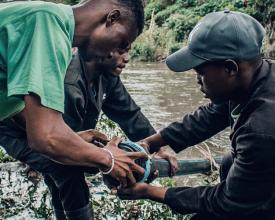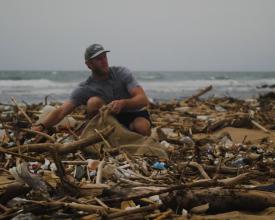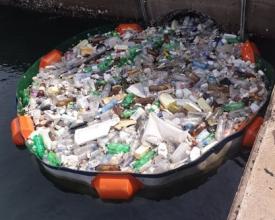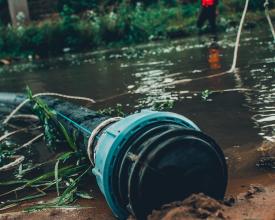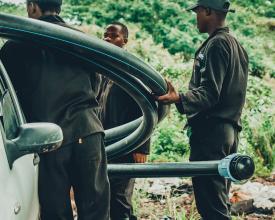
The Litterboom Project
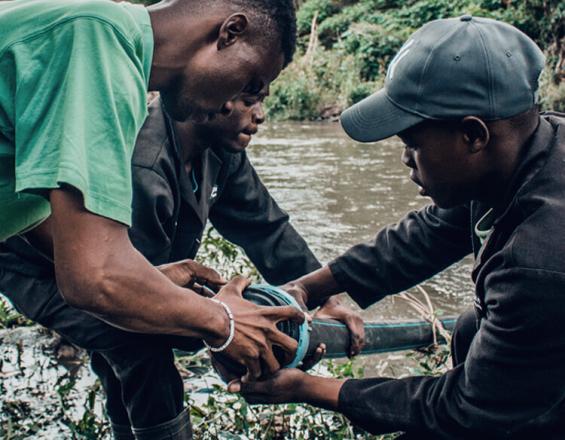
In South Africa almost 90% of South Africa's marine plastic pollution originates from its own river systems.The Litterboom Project (TLP) uses a large pipe that is anchored across the river, which acts as a catchment for all surface-level plastics- which are predominantly HDPE and PET. This preventative measure is set up strategically where it can collect the most rubbish and where the team collects, sorts, and sends the plastic off for recycling.
Context
Challenges addressed
- Inadequate finances to fully ensure all the rivers are covered with the boom to trap plastics
- A lot of waste that is non-recyclable i.e textiles, polystyrene, and certain plastic packaging with no commercial value, have made it difficult to divert plastic pollution overrun landfill sites
- Vagaries of weather sometimes make rivers rise significantly thereby destroying the already installed litter booms rivers rise significantly.
- Inadequate awareness among communities on how to dispose and manage plastic waste at the household level.
- Only catches plastic floating on the surface.
- Booms and traps do not catch microplastics.
- The boom and traps sits across the river so may block traffic depending on location.
Location
Process
Summary of the process
Partnerships and infrastructural development have been interacting dependently in order to scale this project to other localities in South Africa, making the impacts visible. A project started by one man with a dream of seeing a clean beach involved many partners who came in with their expertise to scale the use of booms to trap waste flowing through rivers.
Building Blocks
Infrastructural development
To prevent mismanagement of plastics waste from reaching beaches and the marine environment, the investment of litter booms, traps, and other technological solutions is and still a priority.
Enabling factors
The litter booms and traps work efficiently when staff have been trained on the installation as well as maintenance including working with communities to manage waste at source to prevent river pollution.
Lesson learned
- Infrastructure maintenance is at the core of development.
- Training and capacity building should be continuous.
- Community engagement must be at the core of management.
Partnerships
Partnerships are critical for scaling and innovative idea like boom and traps as well as getting the buying from the government as well as unlocking funding for scaling.
Enabling factors
- Openness and strategic communication.
- Meaningful strategic engagement.
Lesson learned
- Partnerships must evolve with time.
- Be flexible and accommodate diverse opinions.
- Sharing success and failures is part of the collaboration.
Impacts
- TLP currently has employed over 36 staff dedicated to five of Durban’s most polluted river systems, collecting over 33,000lbs of plastic every month.
- The Durban Green Corridor litter booms in the Umgeni River catchment are serviced by plastics collectors and the collected materials are sorted and sold to plastics recyclers.
- A successful Black River Pollution meeting on 24 October in 2018 brought various role partners together to share information and come up with a river pollution strategy – an action plan for 2019 putting TLP on the course of being scaled.
- TLP has reduced the City Council budget for rivers clean in Kwazulu Natal by 98%.
Beneficiaries
- Young people due to employment opportunities.
- Material recycling and treatment facilities.
- Local governments.
- Hospitality industries as result of clean beaches.
- Communities at large.
Sustainable Development Goals
Story
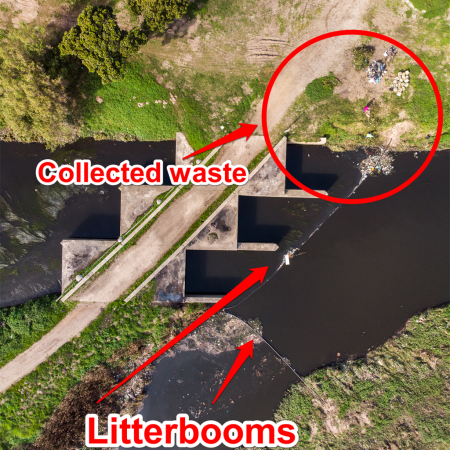
A series of innovative floating plastic litter booms has just made its way onto Cape Town's waterways, which will go a long way toward collecting waste that otherwise would have dispersed into the ocean or potentially become hazardous for those living along the riverbanks near it.
The booms have so far been rolled out along the city's Black River system, which can overflow with tonnes of plastic every year into the sea at Paarden Eiland.
The litter booms are designed to stretch over the surface of the water, catching floating plastic and other debris as the debris moves downstream.
Photo: Jay Caboz
The efforts form part of a public private partnership between the City of Cape Town, and two NGOs - The Litterboom Project (TLP) and Pristine Earth Collective - that are conducting a "RIVERLUTION" to clean up water systems in the city.
"We believe that this first proof of concept will be a starting point for focusing our efforts on river interception systems and revisiting our waste management structure in hotspot areas," said Cameron Service, founder of TLP.
Almost 90% of South Africa's marine plastic pollution originates from its own river systems. This amounts to between 15 000 and 40 000 tonnes of marine plastic per year, according to new research published by Carina Verster and Hindrik Bouwman in the South African Journal of Science in June.
TLP is South Africa's first large-scale river interception programme. It began in 2017 as a pilot project collecting waste in the Umgeni River in Durban. Since then, TLP has branched out with more than 20 booms across river systems in KwaZulu-Natal, successfully removing 700kg to 1 tonne of plastic each day.
